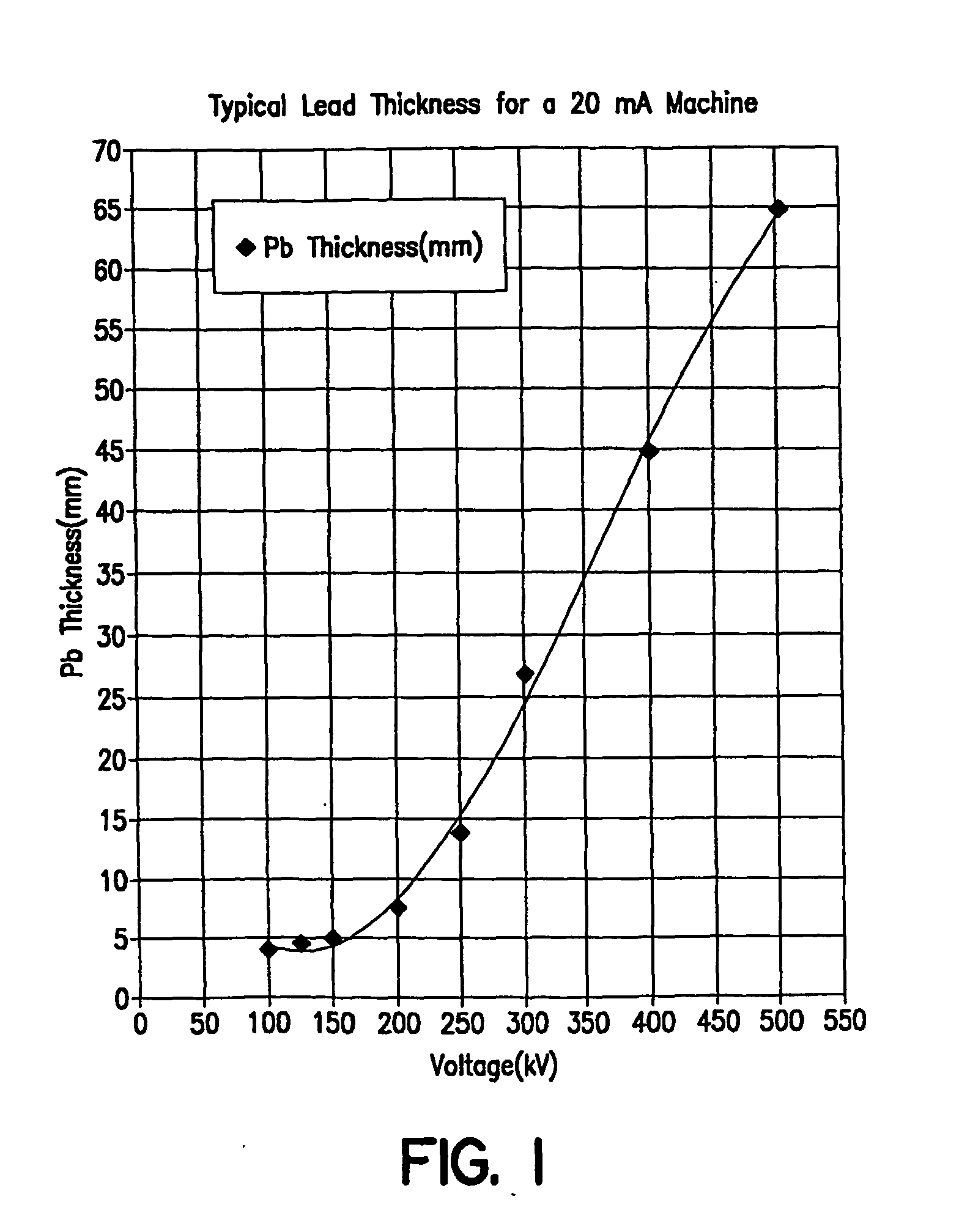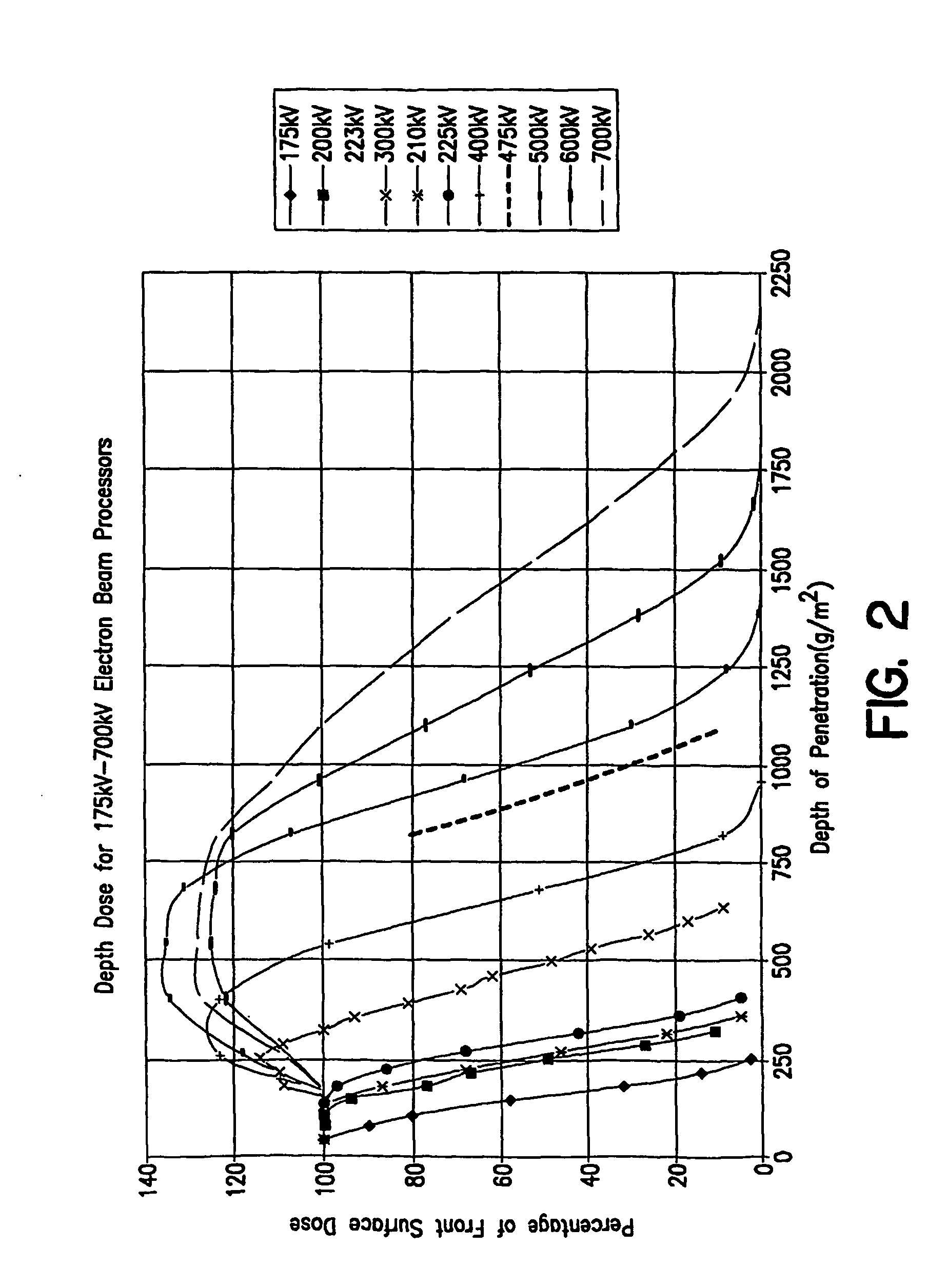Process for electron sterilization of a container
a technology of electron sterilization and container, applied in the field of electron processing, can solve the problems of contamination of fill-zones, no time available for bottle rotation,
- Summary
- Abstract
- Description
- Claims
- Application Information
AI Technical Summary
Benefits of technology
Problems solved by technology
Method used
Image
Examples
Embodiment Construction
Purpose of the Process
[0028] The teaching of this application is directed to the use of minimum electron energy for the sterilization of preformed containers in order to minimize the machinery size, cost and radiation shielding required for in-line use. These sterilizers are designed to permit use in uncontrolled areas which means that the X-ray levels at the surfaces for the system must be reduced to levels acceptable for continuous human occupancy, typically 0.05 millirem / h or 0.5μ Gy / h(7). An indication of the lead thicknesses required to reduce a sterilizer of modest power to these levels is shown(8) in FIG. 1. The goal of the system designer then is to arrive at an operating voltage for the accelerator which provides electrons of adequate energy to sterilize all surfaces of the container while subjecting those regions which are easily treated, such as the container's outer surface, to dose levels which are acceptable. That is, a dose uniformity is sought which provides an acc...
PUM
| Property | Measurement | Unit |
|---|---|---|
| speed | aaaaa | aaaaa |
| holding time | aaaaa | aaaaa |
| density | aaaaa | aaaaa |
Abstract
Description
Claims
Application Information
 Login to View More
Login to View More - R&D
- Intellectual Property
- Life Sciences
- Materials
- Tech Scout
- Unparalleled Data Quality
- Higher Quality Content
- 60% Fewer Hallucinations
Browse by: Latest US Patents, China's latest patents, Technical Efficacy Thesaurus, Application Domain, Technology Topic, Popular Technical Reports.
© 2025 PatSnap. All rights reserved.Legal|Privacy policy|Modern Slavery Act Transparency Statement|Sitemap|About US| Contact US: help@patsnap.com



